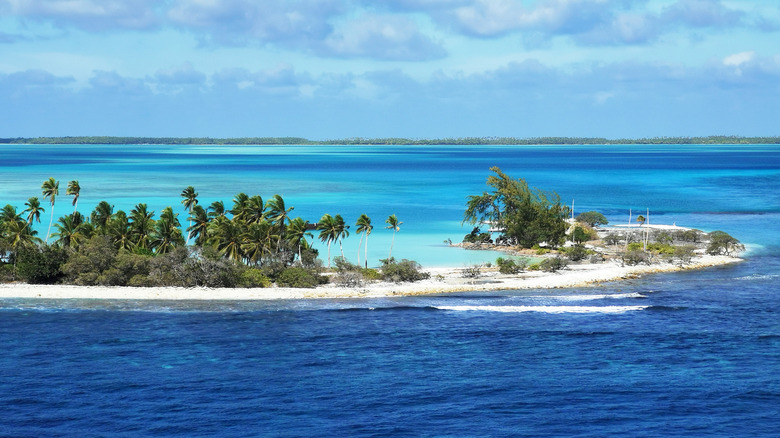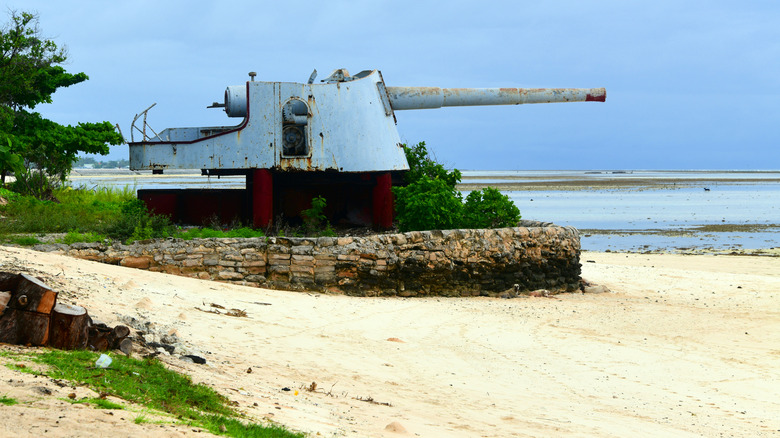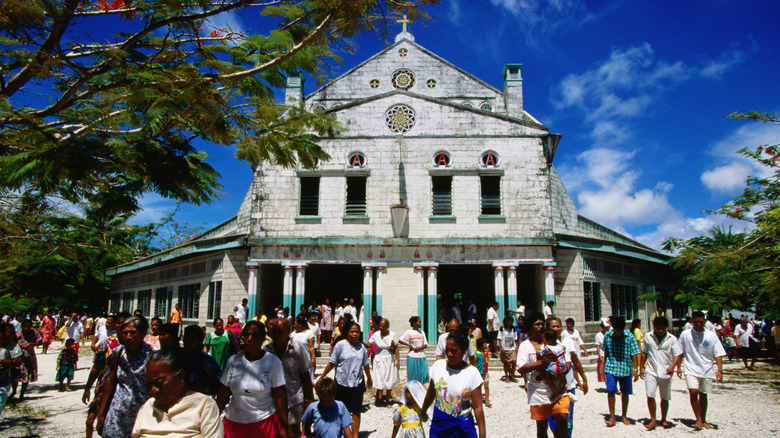While travelers flock to Fiji’s popular, top-rated islands or Bora Bora, the celebrity vacation destination, Kiribati remains an untouched gem, far from the crowds. This island nation, made up of 33 coral atolls and reef islands, stretches across the central Pacific Ocean, just south of Hawaii. With its official tourism slogan — “Kiribati is for travelers, not tourists” — it’s clear this isn’t a place for luxury resorts, swim-up bars, or 5-star dining. Instead, it offers a rare chance to connect deeply with nature and experience a rich Pacific Island culture. Of the 33 islands, only 21 are inhabited, with most lying just a few meters above sea level. Rising tides threaten the land, making now the perfect time to experience Kiribati before the effects of climate change alter it forever.
The country is divided into three island groups. The Gilbert Islands house the capital, South Tarawa, where more than half of Kiribati’s residents live. Tarawa’s history is deeply marked by World War II, with remnants of battle still scattered along its shores. The Phoenix Islands, the world’s largest Marine Protected Area, host only one inhabited island, surrounded by thriving coral reefs home to around 800 marine species. Lastly, the Line Islands, known for their exceptional fishing opportunities, sit in the world’s most advanced time zone, making them the first place on Earth to welcome each new day.
Discovering Kiribati, from war relics to untouched waters
Kiribati’s islands hold a layered history shaped by centuries of migration, colonial rule, and wartime conflict. Once a settlement of various Pacific peoples, the islands became a British colony in 1892 and only gained independence in 1979. During World War II, Japan occupied Butaritari and Tarawa, leading to an American-led battle that left nearly 6,400 dead. Today, Tarawa bears the marks of this history, with scattered wartime debris and bunkers hidden along the coastline. The southern part of the atoll, Betio Island, is where you’re most likely to find war relics, including abandoned tanks and artillery guns left behind on beaches named Red Beach, Black Beach, and Green Beach.
As the largest township in the capital, Betio Island is home to the Kiribati National Tourism Office and a handful of local cafés, including Mary’s Beach Cafe, where visitors can try the national dish, palusami (coconut cream wrapped in taro leaves). Here, you can also see a Kiribati traditional dance performance and rent jet skis. South Tarawa’s islands are connected by causeways, allowing easy access to cultural sites like Bairiki’s main square or the Kiribati National Museum and Cultural Centre in Bikenibeu.
Kiribati’s natural habitats are breathtaking. Kiritimati (Christmas) Island, in the Line Islands, is a dream destination for anglers, offering year-round fishing in pristine green-blue waters teeming with bonefish, triggerfish, and yellowfin tuna. The island’s crystal-clear lagoons also provide prime spots for snorkeling and surfing. For a truly untouched marine ecosystem, the Phoenix Islands — a UNESCO Marine Protected Area — boast some of the Pacific’s lushest coral reefs. Kanton Island, the one inhabited island in this group, welcomes visitors if you get permission from the PIPA office in Tarawa.




